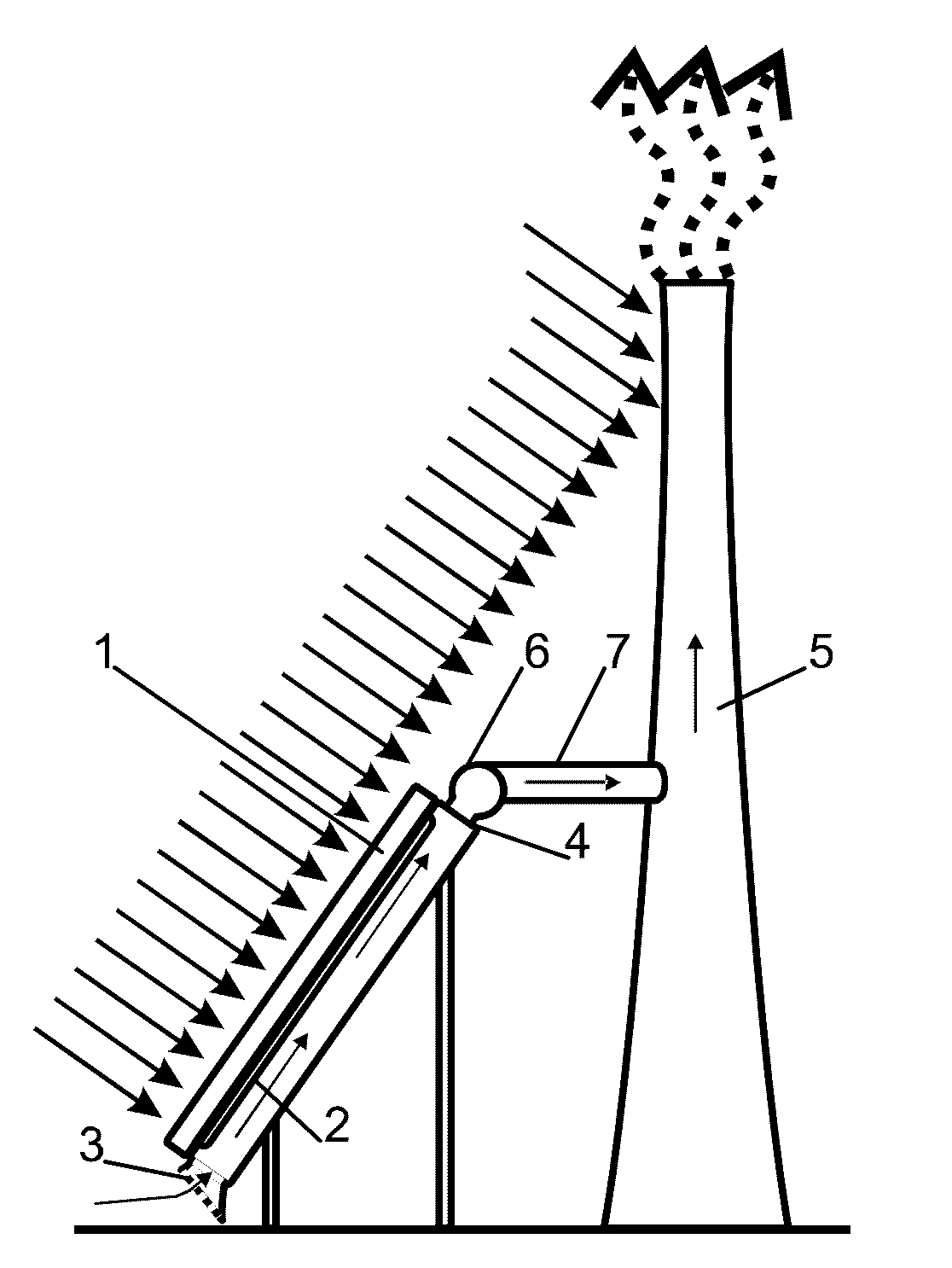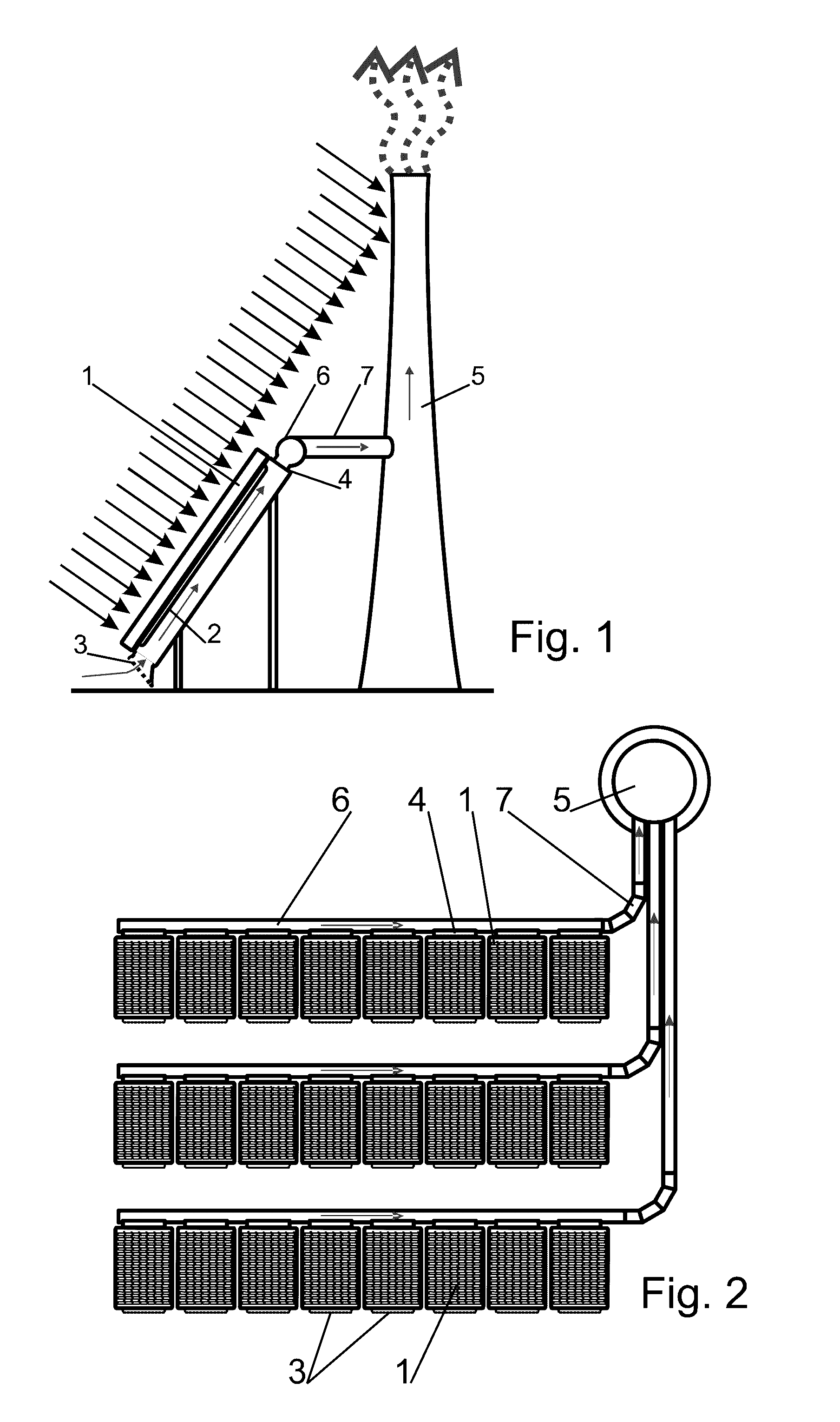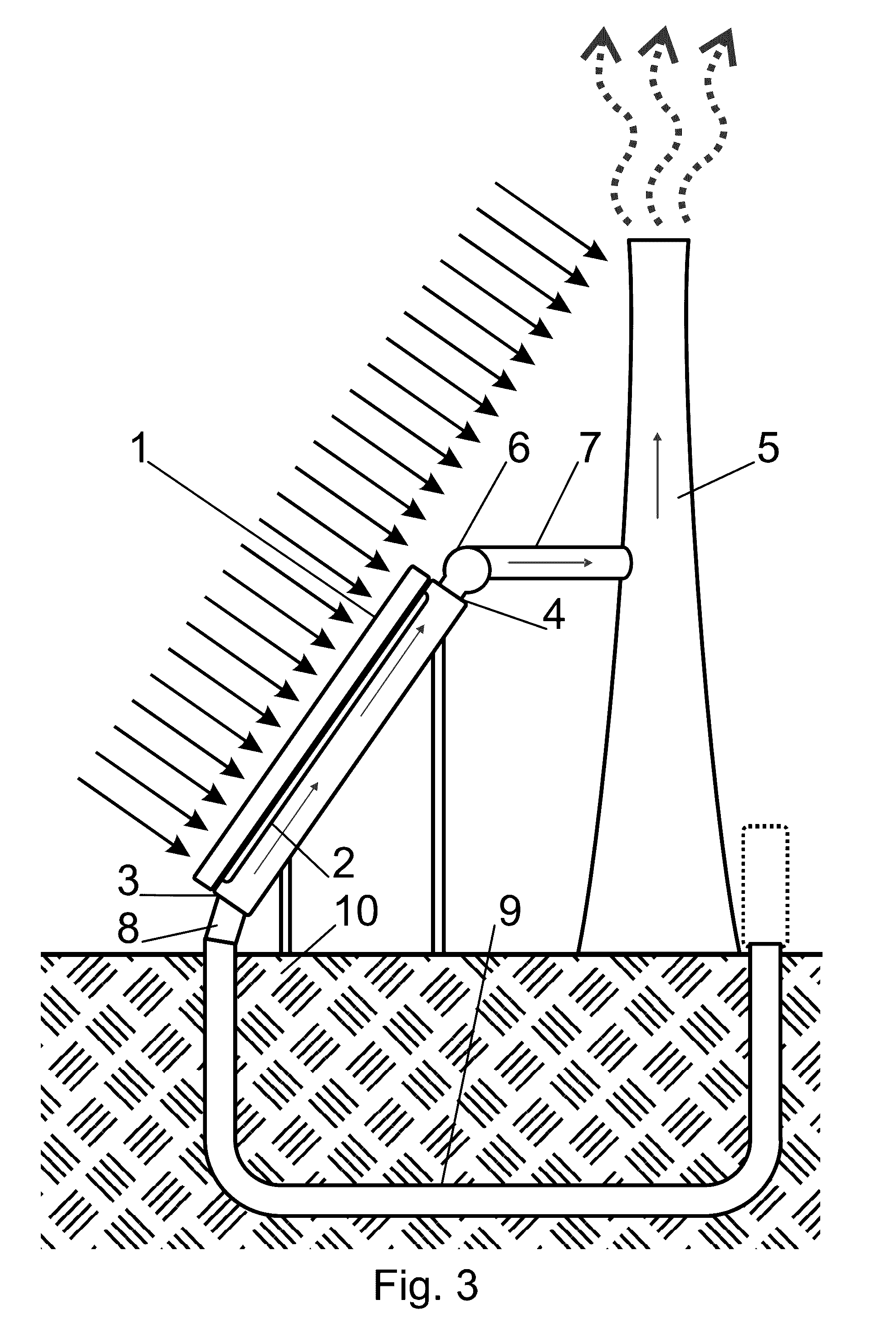System and method of cooling of photovoltaic panel and method of installation of system
a photovoltaic panel and cooling system technology, applied in photovoltaics, solar heat devices, other heat production devices, etc., can solve the problems of contradictory cell temperature requirements, inapplicability, and inability to solve the problem of photovoltaic panel heat,
- Summary
- Abstract
- Description
- Claims
- Application Information
AI Technical Summary
Benefits of technology
Problems solved by technology
Method used
Image
Examples
examples of invention implementations
Example 1
[0050]In the example according to the FIGS. 1, 2 and 6, there is a cooling system and method used in a small photovoltaic power plant that has three rows of panels 1 with 8 panels 1 in each row. Each panel 1 encompasses a unit, in which there are air coolers 2. The air coolers 2 are in the form of aluminium grille ribs at the back side of the photovoltaic cells. In the lower part of the unit there is a cooling air intake opening 3, in the upper part at the back there is an air outtake vent 4. The cooling air intake opening 3 is equipped with a mesh net preventing insects from entering the unit.
[0051]The unit outtake vent 4 is connected to a joint thermal collector 6 for one row of panels 1. Each of the three collectors 6 is then connected to a chimney 5 using independent and different diameter warm air piping 7. The pipework forming warm air piping 7 of the first and second order is transparent and runs on the eastern side.
[0052]A chimney 5 is in the north-eastern corner of...
example 2
[0053]In the example according to the FIGS. 3 and 4, the system described in the previous example is supplemented for a ground-coupled heat exchanger 9 of the air—ground 10 type. The ground-coupled heat exchanger 9 consists of several 6 m long plastic pipes of 400 mm diameter. The pipes are connected using pipe fittings forming a 60 m long route, in which the sucked air is cooled. The cooling air piping 8 connects the intake openings 3 with the ground-coupled heat exchanger 9.
[0054]The ground-coupled heat exchanger 9 is under ground 10 under photovoltaic panels 1. It was dug into the ground 10 even before the photovoltaic panels 1 were mounted. The air intake into the ground-coupled heat exchanger 9 is above the ground level on the north side and it is equipped with a replaceable filter.
example 3
[0055]In the example according to the FIG. 5, there is a ground-coupled heat exchanger 9 in the form of a register, in which air flow division are reached and by that even the speed and pressure losses are lowered. In principle, it is possible to use various combinations of ground-coupled heat exchanger 9 installation.
PUM
 Login to View More
Login to View More Abstract
Description
Claims
Application Information
 Login to View More
Login to View More - R&D
- Intellectual Property
- Life Sciences
- Materials
- Tech Scout
- Unparalleled Data Quality
- Higher Quality Content
- 60% Fewer Hallucinations
Browse by: Latest US Patents, China's latest patents, Technical Efficacy Thesaurus, Application Domain, Technology Topic, Popular Technical Reports.
© 2025 PatSnap. All rights reserved.Legal|Privacy policy|Modern Slavery Act Transparency Statement|Sitemap|About US| Contact US: help@patsnap.com



